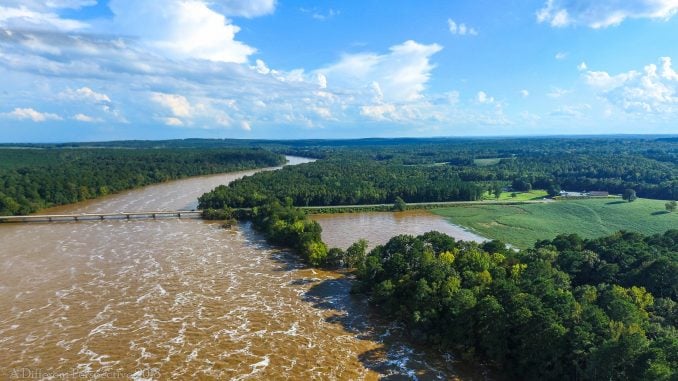
RALEIGH — The death toll has risen to at least 34 in three states, with 26 fatalities in North Carolina, as Florence’s remnants went in two directions: Water flowed downstream toward the Carolina coast, and storms moved through the Northeast, where flash floods hit New Hampshire and New York.
In the meantime, residents of Wilmington stood in line for hours for food and water Tuesday, after military trucks were able to bring supplies to the flooded off city.
Mayor Bill Saffo said two routes were now open into Wilmington, which had been completely cut off by floodwaters, but those roads could close again as water swells the Cape Fear River on the city’s west side.
“We still are encouraging or asking folks not to come home,” said Woody White, chairman of the New Hanover County commissioners. “We want you here. We love you. We miss you. But access to Wilmington is still very limited and is not improving as quickly as we would like.”
At Fayetteville, about 100 miles inland, near the Army’s sprawling Fort Bragg, the Cape Fear River had risen about 50 feet toward a crest that was predicted to be more than 25 feet above flood level.
The river swallowed trees, lamp posts and a parking lot near its banks. City officials warned that still-rising water threatened some neighborhoods and businesses that seemed safe, but said the worst was nearly over and life was beginning to return to normal.
But as the state reels from Florence, many are asking how a Category 1 storm could bring such devastation. Meteorologists say its wind, not water, that determines the categories sometimes misleading to the public.
When meteorologists downgraded Hurricane Florence from a powerful Category 4 storm to a Category 2 and then a Category 1, Wayne Mills figured he could stick it out.
He regrets it. The Neuse River, normally 150 feet away, lapped near his door in New Bern on Sunday even as the storm had “weakened” further.
People like Mills can be lulled into thinking a hurricane is less dangerous when the rating of a storm is reduced. But those ratings are based on wind strength, not rainfall or storm surge — and water is responsible for 90 percent of storm deaths.
Several meteorologists and disaster experts said something needs to change with the 47-year-old Saffir-Simpson Hurricane Wind Scale to reflect the real risks in hurricanes.
“The concept of saying ‘downgraded’ or ‘weakened’ should be forever banished,” said University of Georgia meteorology professor Marshall Shepherd. “With Florence, I felt it was more dangerous after it was lowered to Category 2.”
It was a lowered category that helped convince Famous Roberts, a corrections officer from Trenton, to stay behind. “Like a lot of people (we) didn’t think it was actually going to be as bad,” he said. “With the category drop … that’s another factor why we did stay.”
Once a storm hits 74 mph it is considered a Category 1 hurricane. It ratchets up until it reaches the top-of-the-scale Category 5 at 157 mph. Florence hit as a Category 1 with 90 mph winds — not a particularly blustery hurricane — but so far it has dumped nearly 3 feet of rain in parts of North Carolina and nearly 2 feet in sections of South Carolina.
“There’s more to the story than the category,” University of Miami hurricane researcher Brian McNoldy said. “While you may still have a roof on your house because ‘it’s only a Category 1,’ you may also be desperately hoping to get rescued from that same roof because of the flooding.”
The Associated Press contributed to this story.



